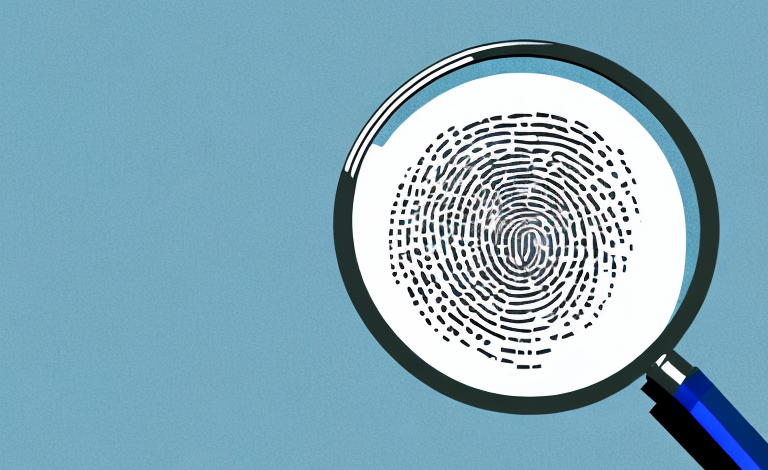Fingerprint analysis has been a crucial tool in law enforcement for over a century. It is a reliable and accurate way of identifying individuals, and it has helped to solve numerous crimes. In this article, we’ll explore the history of fingerprint analysis, the science behind it, the types of fingerprints, and how they are collected at crime scenes. We’ll also examine the differences between ink and digital fingerprinting, the role of databases in fingerprint matching, and the limitations and challenges of fingerprint analysis. Finally, we’ll look at other biometric identification techniques used by police and real-life cases where fingerprint analysis solved crimes.
The history of fingerprint analysis in law enforcement
The use of fingerprints in identifying individuals dates back over 100 years. The Scottish physician Henry Faulds was the first person to suggest using fingerprints for identification purposes in the late 1800s. He noticed that fingerprints left on objects by criminals could be used to identify them. In 1892, Sir Francis Galton published a book called “Fingerprints,” which explained that each person’s fingerprints are unique and that they can be used for identification purposes. This work laid the foundation for the use of fingerprints in law enforcement.
Since then, fingerprint analysis has become an essential tool in law enforcement. It is used to identify suspects, link them to crime scenes, and even exonerate innocent individuals. The process of analyzing fingerprints involves comparing the unique patterns and ridges on a suspect’s fingers to those found at a crime scene. This process has become increasingly sophisticated over time, with the use of computerized databases and advanced technology. Today, fingerprint analysis is a crucial part of criminal investigations and has helped to solve countless cases around the world.
The science behind fingerprint identification
Every person has a unique pattern of ridges and furrows on their fingertips, which form their fingerprints. The science behind fingerprint identification involves analyzing these patterns to determine whether two prints match. The process involves comparing minutiae points, which are unique characteristics such as ridge endings, dots, and bifurcations. If enough of these points match between the two prints, they are considered a match.
Fingerprint identification has been used as a method of identification for over a century. It was first used in the late 1800s by Sir Francis Galton, who discovered that no two fingerprints are alike. Since then, fingerprint identification has become a widely accepted method of identification in law enforcement and forensic science.
Advancements in technology have made it easier to analyze and compare fingerprints. Automated fingerprint identification systems (AFIS) use computer algorithms to compare fingerprints, making the process faster and more accurate. AFIS has been used to solve many crimes, including cold cases that were previously unsolved.
Types of fingerprints and their characteristics
There are three main types of fingerprints: loop, whorl, and arch. Loop fingerprints account for around 60% of all prints and are characterized by a loop that opens towards the little finger. Whorl fingerprints account for around 35% of prints and look like a bull’s eye. Arch fingerprints account for around 5% of prints and have no loop or whorl pattern. Each of these types has unique characteristics that can be used to identify an individual.
Loop fingerprints can be further classified into radial loops and ulnar loops. Radial loops open towards the thumb, while ulnar loops open towards the little finger. Whorl fingerprints can be classified into plain whorls, central pocket whorls, double loop whorls, and accidental whorls. Each of these subtypes has its own unique characteristics that can aid in identification.
Fingerprints are not only unique to individuals, but they also remain unchanged throughout a person’s lifetime. This makes them a reliable form of identification in forensic investigations. In addition to criminal investigations, fingerprints are also used for security purposes, such as in biometric authentication systems for access control.
The differences between ink and digital fingerprinting
Ink fingerprinting involves applying ink to the fingers and then pressing them onto a card to create a print. This type of fingerprinting is still used in some circumstances. However, digital fingerprinting has become the standard method in recent years. This involves scanning the fingerprints directly into a computer database, eliminating the need for ink and paper. Digital fingerprints can be sent electronically to law enforcement agencies, making the process more efficient.
Another advantage of digital fingerprinting is that it allows for more accurate and detailed prints. Ink fingerprints can sometimes be smudged or distorted, making it difficult to identify the individual. Digital fingerprints, on the other hand, can be enhanced and zoomed in on to reveal even the smallest details. This can be especially helpful in solving crimes or identifying suspects.
How fingerprints are collected at a crime scene
Fingerprints are often left behind at crime scenes, and collecting them is crucial to solving crimes. The process involves using fingerprint powder to make the print visible and then using tape to lift the print off the surface. Once the print is collected, it is examined for unique characteristics that can be used to identify the individual.
It is important to note that not all surfaces are suitable for collecting fingerprints. Porous surfaces, such as paper or fabric, can be difficult to collect prints from as the powder may not adhere properly. In these cases, other methods such as chemical treatments or alternative light sources may be used to enhance the print. Additionally, it is important for investigators to wear gloves when collecting prints to avoid contaminating the evidence with their own fingerprints.
The role of databases in fingerprint matching
Fingerprint databases are an essential tool in the matching process. Law enforcement agencies collect prints from individuals when they are arrested, and these prints are stored in a database. When a print is collected at a crime scene, it can be compared to the prints in the database to identify a suspect. The use of databases has made it easier for law enforcement to identify suspects and solve crimes.
In addition to aiding in criminal investigations, fingerprint databases also have applications in other fields. For example, they can be used in border control to verify the identity of travelers and prevent illegal entry. Fingerprint databases can also be used in the workplace to ensure that employees are who they claim to be and to prevent fraud.
However, the use of fingerprint databases has raised concerns about privacy and civil liberties. Some people worry that their fingerprints could be used for purposes other than criminal investigations, such as tracking their movements or monitoring their activities. It is important for law enforcement agencies to have strict policies in place to protect the privacy of individuals and ensure that the use of fingerprint databases is limited to legitimate purposes.
Limitations and challenges in fingerprint analysis
While fingerprint analysis is a reliable and accurate method of identification, it is not infallible. Sometimes, the quality of the print is not sufficient to make a positive match, and in some cases, two people may have similar prints. Additionally, some people may not have distinct minutiae points due to age or other factors, making it difficult to match their prints.
Another challenge in fingerprint analysis is the possibility of human error. The process of collecting and analyzing fingerprints involves multiple steps, and any mistake in any of these steps can lead to inaccurate results. For example, if the person collecting the print does not use the correct technique or equipment, the print may be distorted or incomplete, making it difficult to match. Similarly, if the analyst interpreting the print is not properly trained or experienced, they may misinterpret the patterns and make a false match.
Furthermore, fingerprint analysis may not be effective in cases where the prints have been intentionally altered or destroyed. Criminals may attempt to alter their fingerprints by burning, cutting, or using chemicals, making it difficult or impossible to match them. In such cases, other methods of identification, such as DNA analysis or facial recognition, may need to be used.
Other biometric identification techniques used by police
In addition to fingerprint analysis, law enforcement agencies use other biometric identification techniques, such as facial recognition and DNA analysis. Facial recognition involves comparing an image of a suspect’s face to a database of images to identify them. DNA analysis involves examining DNA samples collected from a crime scene to identify a suspect. These techniques can provide additional evidence to supplement fingerprint analysis.
Facial recognition technology has become increasingly controversial due to concerns about privacy and accuracy. Critics argue that the technology can be biased against certain groups, such as people of color, and can lead to false identifications. Some cities and states have even banned the use of facial recognition by law enforcement.
On the other hand, DNA analysis has been a game-changer in solving cold cases and exonerating wrongfully convicted individuals. DNA evidence can link a suspect to a crime scene or exclude them as a suspect, providing crucial information for investigations. However, DNA analysis can be time-consuming and expensive, and there are concerns about the storage and use of DNA samples.
Real-life cases where fingerprint analysis solved crimes
There have been numerous cases where fingerprint analysis has helped to solve crimes. One notable case occurred in 2002 when a man named Brandon Mayfield was wrongfully linked to the Madrid train bombings based on a fingerprint match. However, upon further analysis, it was determined that the match was incorrect, and he was exonerated. In contrast, fingerprint analysis helped to convict the perpetrator of the 2005 London bombings, who was identified through fingerprint evidence found on the scene.
In conclusion, fingerprint analysis is a crucial tool in law enforcement that has been used for over a century. It involves comparing the unique pattern of ridges and furrows on an individual’s fingertips to identify them. While the process is not infallible, it has helped to solve numerous crimes and is an essential tool in the fight against crime. Additionally, the use of digital fingerprinting and databases has made the process more efficient and effective than ever before.
One recent case where fingerprint analysis played a crucial role in solving a crime was the murder of George Floyd in 2020. Fingerprint evidence found on the car where Floyd was arrested helped to identify one of the officers involved in his death. This evidence was a key factor in the officer’s subsequent arrest and conviction for second-degree murder and manslaughter.



